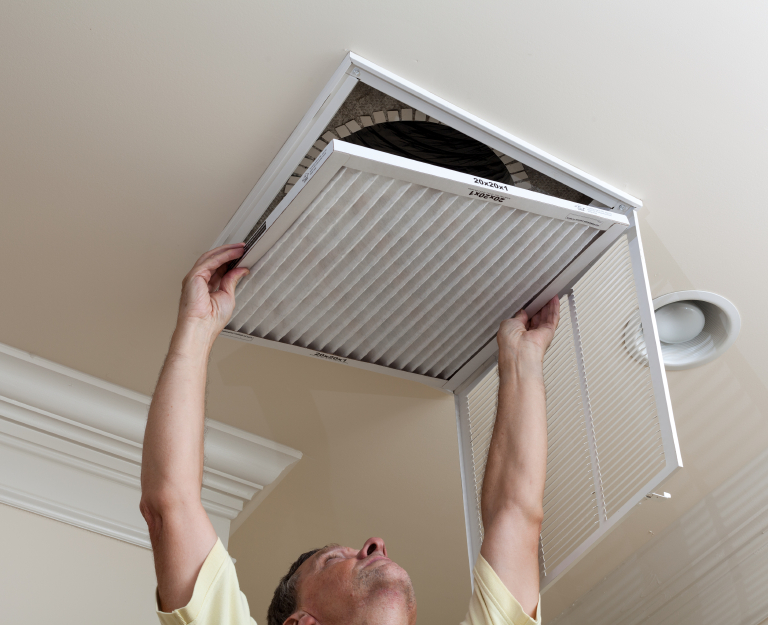Replace AC Filters
Over time, dirt and dust build up in your heating and air conditioner filters making your heater or AC work harder to keep your home comfortable. This means more energy use and higher utility bills. Clogged filters can even cause your system to overheat and can harm the air quality in your home. Regularly replacing air filters keeps your heating and cooling system in top shape and your indoor air clean. It can also save 5%-15% on air conditioning energy use bills!
Your Impact
Action Steps & Tips
Introduction

Over time, dirt and dust build up in your heating and air conditioner filters. This reduces air flow and makes your equipment work harder to keep your home comfortable, which in turn, wastes energy and money. Clogged filters can even cause your system to overheat and can harm the air quality in your home.
Replacing heating and air conditioning system filters:
-
Protects your heating and cooling system from damage
-
Is easy, fast and cheap
-
Protects your home air quality and your family’s health, especially if they have asthma or other respiratory problems
-
Saves energy and money and can reduce your air conditioning bill by 5%-15%
-
Reduces climate and air pollution
Below are a few basic tips. Check your equipment manual or call your HVAC professional if you need help finding and changing your filters.
1Step 1. Find and check your air filter
Different air conditioning and heating systems have different locations for filters. If you have a central AC system, the filter may be behind the main vent that lets cool air into the house. For window AC units, it is usually directly behind where the cool air comes out.
Your heater filter might be inside the furnace or inside the return air vent. Before removing and replacing your filter, make sure to turn your unit off so no air is flowing while you try to replace it.
Most manufacturers recommend you check your air filters monthly, particularly during winter and summer months when your heating and cooling systems get the most use. However, sometimes, people find that they need replacement less often.
How often you need to change your filters will depend on a number of things, including what type of air filter you have, the air quality in your house, how many people are in the home, and if you are in an area of high pollution or construction. For example, households with pets or lots of dust will require changing air filters more often. Start off checking your filter monthly until you can see what your filter needs will be.
2Step 2. Replace your filter
Find your filter type. Replacing a filter is easy. First, figure out what type of filter you need by simply looking at your current filter or checking your owner’s manual. If you can’t find your owner’s manual, you can likely find it online by searching with the make and model number of your heating or AC unit.
Purchase a new filter at your local hardware store. Filters are typically inexpensive (around $5-25 per filter.) They come in different sizes and performance ratings that indicate the level of filtration they provide. Higher performance filters cost a bit more but can capture things like mold, bacteria, and smog.
Plastic framed filters can be dusted or vacuumed, washed with water, dried, and reused. However, many people prefer the cardboard-framed disposable variety because handling clogged filters will expose you to dust, hair and other particulate matter that can cause respiratory problems.
Replace your old filter. For a window or central air conditioning system, you will likely need to remove a cover to access the filter. For a furnace, it’s usually as simple as pulling out the old filter and sliding the new one into its slot. If you are unsure how to replace your filters, check out the How to Change a Home Air Filter guide or ask your HVAC contractor to show you.
Finally, record the date that you changed the filter so that you will know when it is time to change it again.


